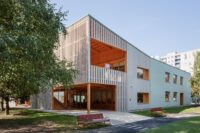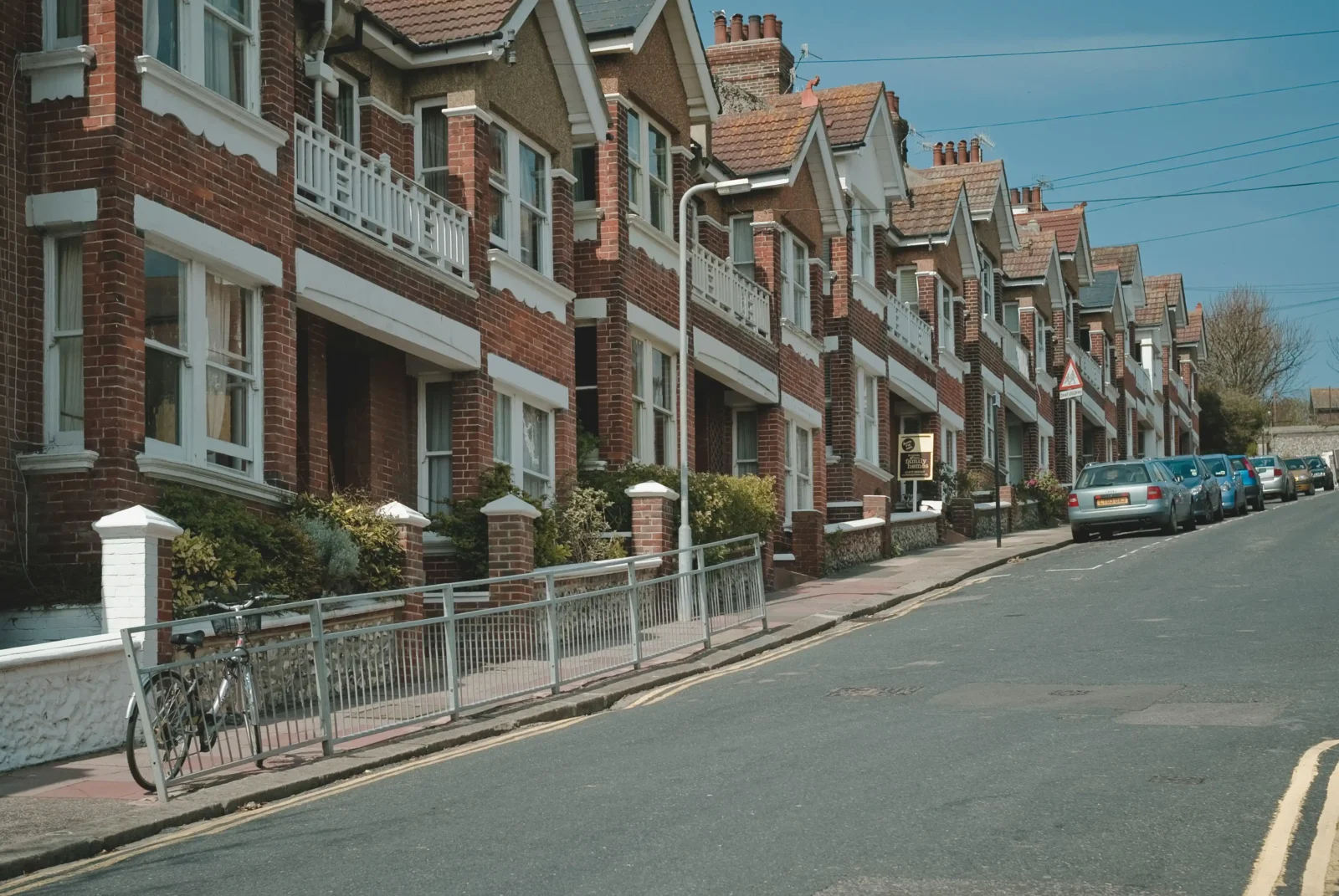- Home
- Articles
- Architectural Portfolio
- Architectral Presentation
- Inspirational Stories
- Architecture News
- Visualization
- BIM Industry
- Facade Design
- Parametric Design
- Career
- Landscape Architecture
- Construction
- Artificial Intelligence
- Sketching
- Design Softwares
- Diagrams
- Writing
- Architectural Tips
- Sustainability
- Courses
- Concept
- Technology
- History & Heritage
- Future of Architecture
- Guides & How-To
- Art & Culture
- Projects
- Interior Design
- Competitions
- Jobs
- Store
- Tools
- More
- Home
- Articles
- Architectural Portfolio
- Architectral Presentation
- Inspirational Stories
- Architecture News
- Visualization
- BIM Industry
- Facade Design
- Parametric Design
- Career
- Landscape Architecture
- Construction
- Artificial Intelligence
- Sketching
- Design Softwares
- Diagrams
- Writing
- Architectural Tips
- Sustainability
- Courses
- Concept
- Technology
- History & Heritage
- Future of Architecture
- Guides & How-To
- Art & Culture
- Projects
- Interior Design
- Competitions
- Jobs
- Store
- Tools
- More
Designing Buildings for Climate and Disasters: Strategies for Resilient Architecture
Explore the vital intersection of resilient architecture and climate challenges in this insightful article. Discover innovative strategies and materials that enhance building safety against disasters, while promoting sustainability. Learn essential principles of design adaptability, durability, and community engagement through compelling case studies.

As we face increasingly unpredictable weather patterns and natural disasters, the need for resilient architecture has never been more critical. Designing buildings that can withstand the forces of nature is essential for protecting lives and property. We’re not just talking about aesthetics; it’s about creating safe havens that adapt to our changing environment.
In this article, we’ll explore innovative strategies and materials that help architects and builders create structures capable of withstanding climate challenges and disasters. By prioritizing sustainability and resilience, we can ensure our communities thrive even in the face of adversity. Join us as we delve into the essential principles of designing for a safer future.

Table of Contents
ToggleOverview of Climate Resilient Design
Climate resilient design focuses on creating buildings that withstand environmental challenges, ensuring safety and functionality. It incorporates sustainable practices to enhance resilience against adverse conditions.

Importance of Sustainable Architecture
Sustainable architecture minimizes environmental impact while maximizing resource efficiency. It reduces energy consumption through energy-efficient systems and materials. By utilizing renewable resources, we lower carbon footprints and enhance community resilience. Sustainable architecture also promotes long-term economic stability by lowering operating costs for building owners and occupants alike.
Key Principles of Resilient Design
Key principles of resilient design include:
- Adaptability: Structures should adapt to changing climate conditions, integrating flexible designs that allow for future modifications.
- Durability: Materials and construction methods need to withstand severe weather events, prioritizing longevity and reduced repair costs.
- Site Selection: Choosing locations less susceptible to natural disasters enhances safety and reduces risk.
- Water Management: Implementing effective drainage systems prevents flooding and water damage, protecting infrastructure.
- Energy Efficiency: Incorporating renewable energy sources, such as solar panels, decreases reliance on non-renewable energy and supports sustainability.
- Community Engagement: Involving local populations in the design process ensures structures meet specific community needs and values.
These principles guide us in creating buildings that not only survive but thrive in the face of climate change and disasters.
Impact of Climate Change on Architecture
Climate change significantly influences architectural practices, urging us to rethink traditional designs. Architects must address rising temperatures, extreme weather events, and increased flooding in their designs to enhance resilience.

Rising Temperatures and Extreme Weather
Rising temperatures create challenges such as increased energy demands and reduced comfort levels in buildings. We prioritize designing structures with improved insulation and ventilation systems to combat rising heat. For instance, using reflective materials and green roofs can help mitigate heat absorption. Extreme weather events, including hurricanes and tornadoes, require us to incorporate robust structural frameworks. Strategies like reinforced foundations and wind-resistant designs ensure buildings withstand higher wind speeds and severe storms. Additionally, be informed with upcoming storms near you that can cause damage.
Flooding and Water Management
Flooding presents another critical concern for architecture influenced by climate change. We focus on effective water management strategies to prevent damage and maintain safety. Elevating structures above predicted flood levels significantly reduces risk. Additionally, incorporating permeable surfaces and green infrastructure, such as rain gardens and bioswales, aids in managing stormwater runoff. These measures not only protect buildings but also enhance community resilience by ensuring that drainage systems remain functional under extreme conditions.
Strategies for Designing Buildings for Climate and Disasters
We adopt various strategies to ensure buildings are resilient against climate impacts and disasters. These strategies focus on utilizing advanced materials and innovative designs that address specific environmental challenges.

Adaptive Building Materials
We utilize adaptive building materials that respond to changing climate conditions. These materials enhance durability while ensuring energy efficiency. Some effective options include:
- Phase-Change Materials (PCMs): PCMs absorb and release thermal energy, maintaining stable indoor temperatures. We can integrate these into walls or ceilings to minimize heating and cooling demands.
- Recycled and Renewable Resources: Using recycled steel, timber, and other renewable materials reduces waste and environmental impact, promoting sustainability.
- Water-Resilient Materials: Flood-resistant concrete and permeable paving systems help manage water runoff and prevent water damage during severe weather events.
Innovative Structural Solutions
We implement innovative structural solutions to fortify buildings against disasters. These solutions enhance safety and adaptability. Key approaches include:
- Modular Construction: Modular design allows for rapid assembly and disassembly, enabling buildings to adapt to changing needs and environments. This method increases efficiency and reduces waste.
- Seismic-Resistant Designs: Incorporating seismic reinforcements, such as shear walls and base isolators, protects structures from earthquake forces while ensuring occupant safety.
- Adaptive Facades: Dynamic facades adjust to weather conditions, improving energy efficiency and reducing strain on heating and cooling systems. These facades can feature adjustable shading devices or responsive glazing.
By employing adaptive building materials and innovative structural solutions, we create resilient structures capable of withstanding the challenges posed by climate change and natural disasters.
Case Studies in Resilient Building Design
We explore significant case studies that exemplify resilient building design, highlighting both success stories and lessons from failures to guide future architectural practices.

Success Stories from Around the World
- The Bosco Verticale, Milan, Italy
Designed by Stefano Boeri, these residential towers integrate green spaces into their structure. The project reduces energy consumption, enhances air quality, and promotes biodiversity in an urban setting.
- The Edge, Amsterdam, Netherlands
This office building incorporates solar panels and smart technology to optimize energy use. Its design emphasizes natural lighting and ventilation, minimizing reliance on artificial systems and resulting in lower operational costs.
- Kākoʻo Project, Hawaii, USA
This community initiative focuses on using local materials and sustainable practices. Raised structures protect against flooding, while community gardens support local food security and resilience against climate impacts.
- Torre David, Caracas, Venezuela
Originally an unfinished skyscraper, it transformed into a thriving community. Local residents adapted the space creatively, showing the power of informal settlements in building resilience through community-driven solutions.
Lessons Learned from Failures
- Pruit-Igoe, St. Louis, USA
This housing project initially aimed for modernist ideals but suffered from poor design and inadequate community planning. Isolation and lack of maintenance led to its demolition, highlighting the importance of community engagement in design.
- New Orleans Housing Post-Katrina, USA
Many homes were rebuilt without considering hurricane-resistant designs. The failures emphasized the need for flood-proof structures and comprehensive disaster planning in vulnerable areas.
- Grenfell Tower, London, UK
The fire at Grenfell Tower underscored the consequences of using non-compliant building materials and inadequate safety measures. This tragedy highlights the necessity of rigorous safety standards and community input in high-rise designs.
- The Big One, California, USA
Projects that ignored seismic codes or failed to implement adaptive strategies created vulnerability. The lack of foresight in these designs stresses the importance of proactive regulations and continuous evaluation of building safety measures.
Future Trends in Climate-Responsive Architecture
Emerging trends in climate-responsive architecture focus on incorporating innovative technologies and adapting policies. These trends enhance resilience against climate change and natural disasters, ensuring our buildings are better equipped for the future.

Emerging Technologies in Building Design
Emerging technologies play a crucial role in advancing climate-responsive architecture. These technologies include:
- Smart Building Systems: Smart systems utilize sensors and automation to optimize energy use and enhance occupant comfort. Examples include intelligent lighting and HVAC systems that adjust based on real-time data.
- 3D Printing: 3D printing facilitates rapid construction with minimal waste. This technology allows us to create complex designs that can adapt to environmental challenges.
- BIM (Building Information Modeling): BIM enhances collaboration among stakeholders, allowing for precise planning and management of resources. It supports efficient designs that align with sustainability goals.
- Renewable Energy Integration: Buildings increasingly incorporate solar panels and wind turbines. These integrations reduce dependency on fossil fuels, contributing to sustainable energy solutions.
- Advanced Materials: Innovative materials, such as self-healing concrete and transparent solar panels, improve durability and energy efficiency. These materials respond to environmental impacts and enhance building resilience.
Policy Implications and Initiatives
Policies significantly influence the implementation of climate-responsive architecture. Relevant initiatives include:
- Building Codes and Standards: Stricter building codes ensure that new structures meet resilience criteria. We observe policies promoting sustainable practices, energy efficiency, and disaster preparedness.
- Financial Incentives: Governments provide tax credits and subsidies for green building projects. These financial incentives encourage developers to incorporate sustainable materials and technologies.
- Community Planning Initiatives: Integrated community planning fosters collaboration between stakeholders. This approach ensures that developments consider local climate risks and promote resilience through diversified land use.
- Research and Development Funding: Increased funding for R&D supports the exploration of innovative solutions. This funding drives advancements in materials, techniques, and technologies necessary for climate-resilient design.
By embracing these emerging technologies and adhering to supportive policies, we can advance climate-responsive architecture that ensures safety, sustainability, and resilience for future generations.
Conclusion
Designing buildings for climate and disasters requires a proactive approach that prioritizes resilience and sustainability. We understand that climate-resilient design serves as a cornerstone for protecting communities against unpredictable environmental challenges. By integrating adaptive building materials, we enhance structural efficiency and climate response.
We emphasize incorporating innovative strategies such as modular construction and seismic-resistant designs, which significantly improve a building’s adaptability and safety during extreme weather. Effective water management strategies, including elevated structures and green infrastructure, play a vital role in disaster preparedness, offering practical solutions to combat flooding.
Our analysis of successful case studies reveals that community engagement and thoughtful planning are crucial for fostering resilience. These examples highlight the potential for integrating local materials and smart technologies, showcasing the multifaceted approach needed to address future climate threats.
Emerging technologies and policies will continue to shape the architecture of tomorrow. By leveraging advancements like smart building systems and Building Information Modeling (BIM), we can create safer, more sustainable structures. Stricter building codes, financial incentives, and dedicated community planning initiatives contribute to a resilient future.
As we move forward, the commitment to designing buildings that withstand climate change and disasters remains essential, enabling us to build a safer, more sustainable world.
- climate adaptive building strategies
- climate resilient architecture
- disaster-proof building design
- earthquake proof architecture
- eco-friendly architectural design
- energy efficient building design
- environmentally friendly building design
- flood-resistant architecture
- green building architects
- hurricane proof building design
- natural disaster resistant buildings
- resilient infrastructure planning
- sustainable architecture solutions
- sustainable urban planning
I create and manage digital content for architecture-focused platforms, specializing in blog writing, short-form video editing, visual content production, and social media coordination. With a strong background in project and team management, I bring structure and creativity to every stage of content production. My skills in marketing, visual design, and strategic planning enable me to deliver impactful, brand-aligned results.
Submit your architectural projects
Follow these steps for submission your project. Submission FormLatest Posts
10 Interesting Facts About Zaha Hadid
Zaha Hadid was a visionary architect whose fluid forms, bold experimentation, and...
Online 3D Terrain Mapping Tools for Urban and Landscape Design in 2025
A curated guide to the best online 3D terrain mapping tools in...
Common Emergency Repairs Every Homeowner Should Be Ready For
For most of us, when something goes wrong, we have a propensity...
Designing, Retrofitting, and Valuing Non-Standard Homes in Britain
Britain’s housing stock carries a quiet contradiction. From the street, many homes...












Leave a comment